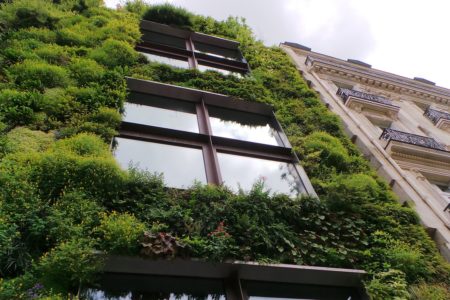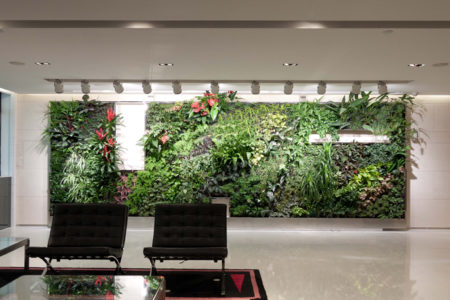
Share On Social!
Feeling the sun’s rays, breathing in cool air, lying amongst the trees, standing in the rain — all ways of how nature can ground people and bring about feelings of joy.
While it’s true that most Latinos and Americans might spend up to 90% of their time indoors, building design can give inhabitants a sense of connectivity to our environment, or biophilia.
Construction workers and architects should make the most of nature to create health-centric structures, according to the American Institute of Architects (AIA).
“Simply put, nature is good for us because we are part of nature,” writes Dr. Miles Richardson, director of core psychology programs at the University of Derby. “We are human animals evolved to make sense of the natural world, and this embeddedness in the natural world can often be forgotten and overlooked.”
Wellness and its Links to Nature
From a physical and mental perspective, individual health improves the closer people are with the world around them.
Moreover, biophilia promotes holistic wellness, focusing on more than just positive thinking or feeling, according to Richardson — it gives deeper understanding, too. 
“Mentally, we can become disconnected from nature because we’re now deeply embedded in a human-made world,” Richardson writes. “Emerging research is showing that knowing and feeling this connection with nature is also good for us, and it helps bring about the wider health benefits of exposure to nature. Knowing your place in nature brings meaning and joy.”
Cognitively, being in nature, and feeling a connection to it, can result in improved “positive affect, vitality, and life satisfaction” according to 2014 research published in Frontiers in Psychology.
“When one controls for other connections (e.g., family or culture), nature connectedness still significantly predicts happiness,” the researchers write. “Additionally, individuals who are higher in nature connectedness may seek out more opportunities to reap the psychological benefits associated with nature exposure, or, from a biophilia perspective, satisfy the need to affiliate with other living things.”
Exposure to green spaces has been shown to improve brain development in Latino children, according to a recent study.
“The study adds to growing evidence suggesting that early-life exposure to green space and other environmental factors can exert measurable and lasting effects on our health through the life course,” the researchers wrote.
Buildings that Bond with Nature
AIA states that are many ways to incorporate biophilia into skyscrapers, offices, homes, and other public spaces.
However, building designers and construction workers must also focus on existing structures, according to architectural experts in a recent report published in Canvas8.
“We need to take into account sick buildings,” said Alexander Bond, founder and consultant at Biophilic Designs. “These are buildings with a monotone color scheme, little access to natural light, and the squeezing of as many bodies into one space as possible.”
Along with taking “sick buildings” into account, the various reports recommend incorporating: 
- Plants and flowers throughout the building, including in hallways, on walls, etc.
- Natural airflow through public and private spaces
- Acoustics that allow for natural sounds
- Green walls on building edifices and green rooftops
Not only is this practice beneficial, but it makes logical sense to bring people closer to nature, according to Neal Overstrom, Nature Lab director at the Rhode Island School of Design.
“Certain things are intuitive,” Overstrom told Business of Home. “We like having plants in our homes, we like having a sense of lushness in our spaces—green, living elements. There are other kinds of concepts, like ‘prospect and refuge.’ We don’t feel as comfortable in a park if there’s a bench in the open as we do if it’s tucked back against a hedge or a space where we’re protected from behind.”
Editor’s Note: This is Part Five of a series on building for holistic health. Read Parts One, Two, Three, and Four. This article is part of a collaboration between Salud America! and the Hoffman Toxicant-Induced Loss of Tolerance (TILT) program at UT Health- San Antonio. To find out if you experience TILT from everyday food, chemical, or drug exposure, take a self-assessment or learn more about TILT.
By The Numbers
1
Quick Survey
Can help you find out how chemically sensitive you are



